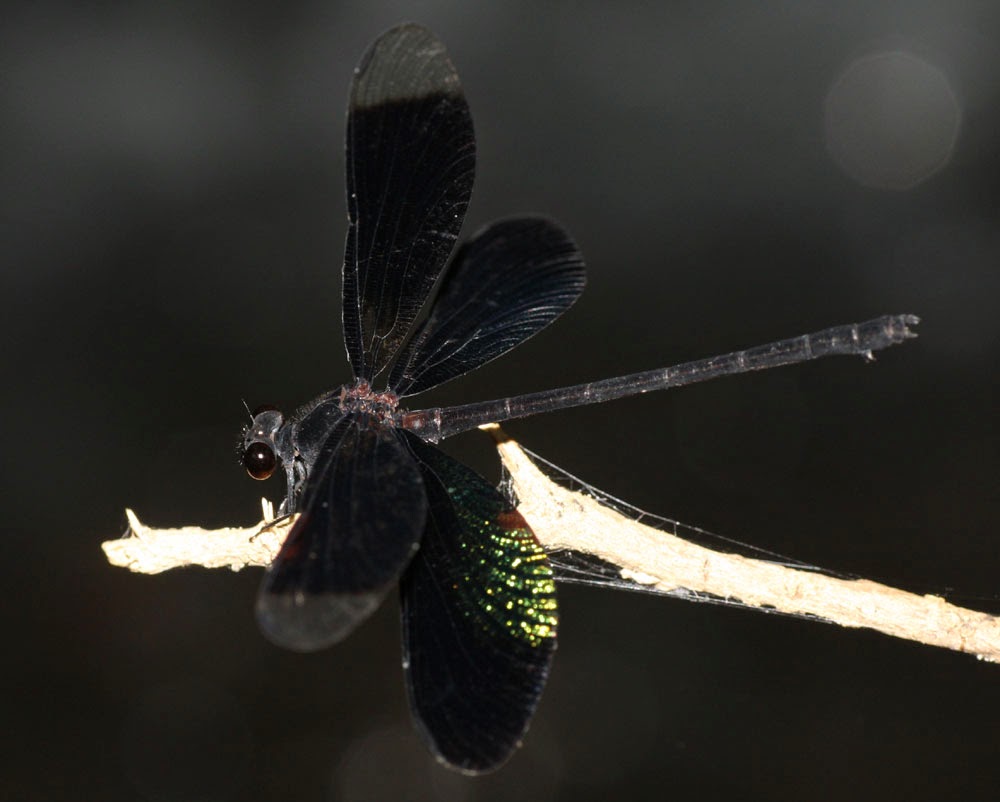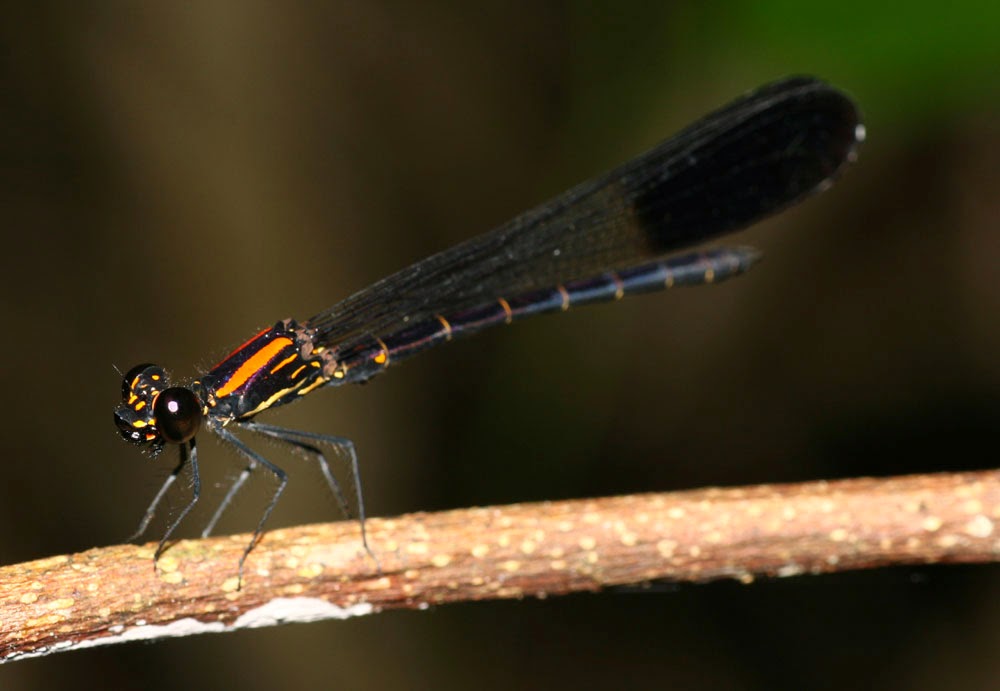A medium-small sized damselfly, this species has colourful body with black, cream-emerald, cream-yellowish, turquoise, red-brown and brick-red marking. The head is narrower in width than it of other later damselflies with three ocelli are quite big and close together. The face is unmistakeable with two lateral cream-emerald markings. The thorax is colourful; the dorsum of the synthorax is black with two big cream-yellowish markings while in lateral view, the thorax is change from red-brown to cream-turquoise with black markings. In ventral view, the synthorax and inner side of femora are light-turquoise. The dorsal abdomen segments are red dark brown with cream-yellowish and dark-turquoise marking. Remarkably, at ventral view, the sixth to eighth segments are bright brick-red while they are light orange in the ninth and tenth segments. Their wings are petiolate, hyaline and alway in horizontal position at rest.
They live in clean, swift and shallow streams in good humid forests of the centre of Vietnam. The colourful body makes the species to be brightening in any views: dorsal, lateral or ventral. They are weak flied insects and usually hide in vegetations that hanging over the water.
Male, lateral view, photographed by Cuong Do, Phu Yen provine
Close up face of male, photographed by Cuong Do, Phu Yen Province



.jpg)
.jpg)
.jpg)
.jpg)





.jpg)
















.jpg)




.jpg)
.jpg)






.jpg)



.jpg)

.jpg)

.jpg)